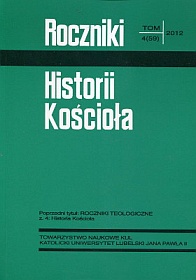Religious Practices of the Cloth Makers Guild in Bielsko and Biała
Abstract
Bielsko and Biała were once separate towns divided along the banks of the river Biała, which was also a state border. The two towns earned their reputation for woollen cloth produced there by local cloth makers. A permit for the cloth makers’ guild was first issued in 1548 in Bielsko, while the guild in Biała was founded in 1667. An intense development of technology in the 19th century, with the rise of cloth making machines, led to a transformation in cloth making from manufacturing to factory production. This is how a big textile production centre came into being, with one of the most powerful textile workers’ guilds. The towns’ location at a flourishing trade route, in the region of intensive sheep grazing – which provided the towns’ factories with wool – as well as rich water and timber inventories – indispensable for the unbroken production cycle – all added to the long-lasting commercial success. An important aspect of the cloth makers’ life was their participation in religious practices in the two towns. Denominationally, the cloth makers were either Roman Catholic or Protestant. The Protestants came to the region from Silesia and from abroad, in the wake of the Counterreformation movement and persecutions of the Protestant populations that followed. They were looking for a peaceful, decent place to live and work.
To be a cloth maker, one needed to complete training and gain respective qualifications. A tripartite system of schooling was in practice: student – apprentice – master. The board of the guild comprised the guild master, assessors and a scribe. Guild masters formed a religious community and they were in charge of official celebrations of all church festivals. The festival that was specially celebrated by both denominations was Corpus Christi. The guild funded altars in the local churches to honour St. Martin – cloth makers’ patron saint. Another religious event celebrated by the Catholic and Protestant cloth makers together was funeral, when any of the guild’s member or any of their family members died. All masters and apprentices were obliged to participate in the celebrations. The guild supported its members and the families of the deceased: the ill, the elderly, the disabled, widows and orphans – victims of their husbands’ and fathers’ tragic death, caused by fires, floods, plague or other acts of God. The guild also supported schools and churches of both denominations, a municipal hospital and orphanages.
With the rise of the industrial revolution, when cloth manufacturing became textile production, the guild became obsolete. It lost its status and power and was substituted by other institutions, while its capital was taken over by the town.
Copyright (c) 2012 Roczniki Historii Kościoła

This work is licensed under a Creative Commons Attribution-NonCommercial-NoDerivatives 4.0 International License.

